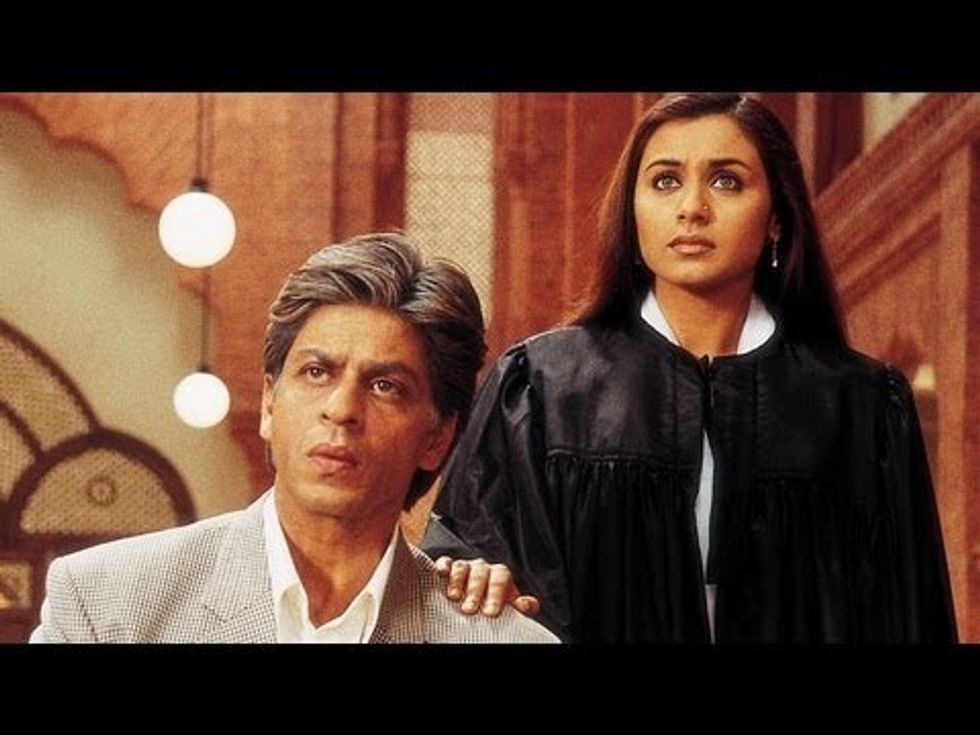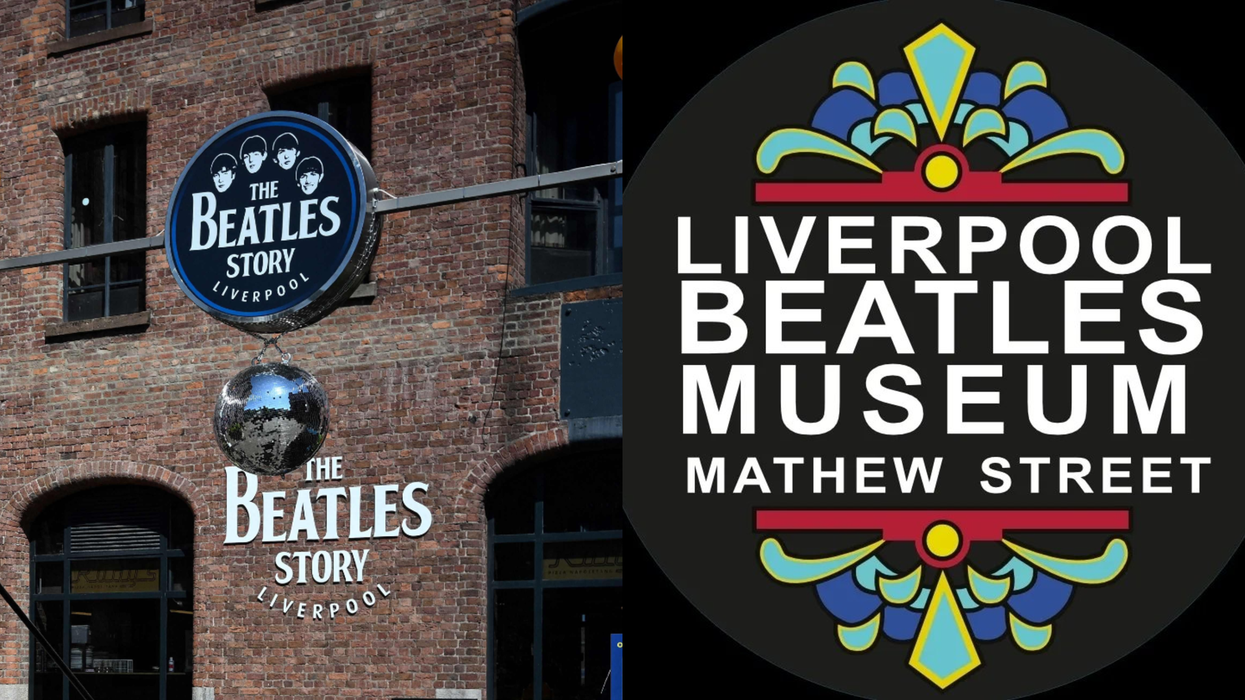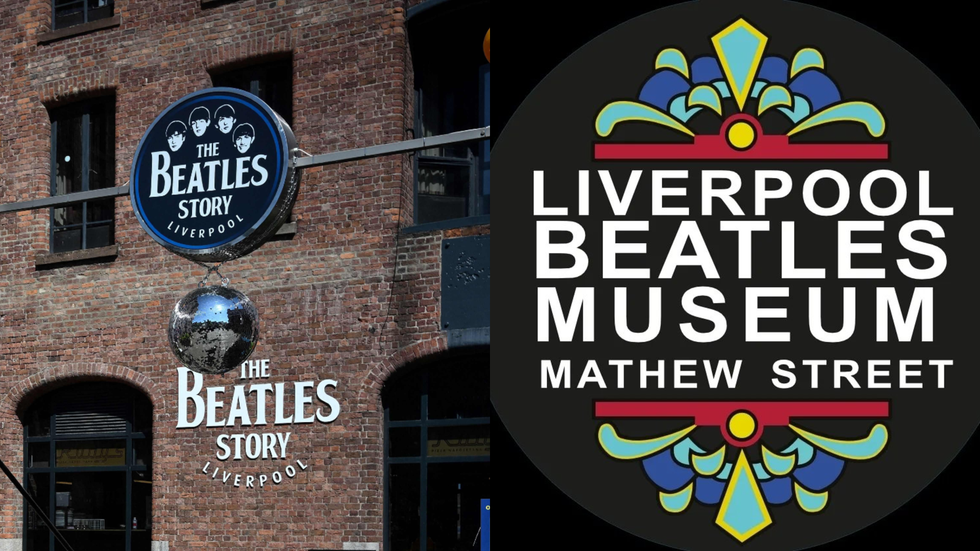ON THE EVE OF HER BIG SCREEN RETURN, WE LOOK BACK ON A LEGENDARY CAREER
POPULAR actress Rani Mukerji will make a long-awaited comeback to the big screen in soon-to-be-released film Hichki.
The story of a teacher battling against the odds is the latest chapter in a remarkable journey for an actress who rose through the ranks to become the queen of Bollywood.
To celebrate Rani’s return, Eastern Eye went back through her action-packed life to give you an all-you-need-to-know A-Z about her...
A is for Awards: The talented actress has won over 250 awards in her amazing career. She won her first major accolade for her breakthrough performance in Kuch Kuch Hota Hai (see T) and would subsequently scoop many more honours. In 2005 she became the first female to win a Filmfare Best Actress (Hum Tum) and Best Supporting Actress (Yuva) award in the same year.
She won the most number of prizes for her stunning display in Black (see B) and is the only heroine to win Best Actress at IIFA Awards three years in a row. She has also won honours for excellence, backing social causes and her immense contribution to cinema.
B is for Black: The queen of hearts has delivered many memorable performances, but many regard her stunning turn in Black (2005), which clocked up huge numbers and broke the record for most trophies won at the Filmfare Awards, as her finest. Although her performance as Michelle McNally is seen as one of the finest in Indian cinema history, director Sanjay Leela Bhansali had to convince her to take on the challenging role.
C is for Chalte Chalte: Rani Mukerji saved the day and starred in Chalte Chalte (2003) after Aishwarya Rai was ousted from the project. The actress later revealed she was the first choice for the role, but initially couldn’t do it because of her lack of available dates. The romantic drama would become Shah Rukh Khan’s first hit home production.
D is for Debut: The young Rani Mukerji was initially uninterested in pursuing an acting career despite coming from a film family. She said: “There were already too many actresses at home and I wanted to be someone different. The teenager finally made her debut with a supporting role in Bengali language drama Biyer Phool (1996) and then entered Bollywood with Raja Ki Aayegi Baraat (1997).
E is for Empowerment: The actress has been a strong advocate for women empowerment since the beginning of her career and helped to bring powerful roles for females into commercial Hindi cinema. Perhaps her most powerful role onscreen was the tough cop in Mardaani (2014), which ended in a memorable fight scene that saw her beat up the male villain.
Rani has also endorsed a number of social initiatives helping women. Talking about her attraction to strong female characters, she said: “Every role has been powerful and has a message for women in some way or the other. It was not a conscious decision to do films like that, but when I am reading a script I relate to strong characters, which attract me more than soft ones. I think that has worked for me.”
F is for Family: The actress hailing from a film family means she has a number of famous relations, including actress Kajol and ace filmmaker Ayan Mukerji, who are her cousins. She is connected through her Mukherjee family tree to legendary members of the movie industry going back three generations. She is married to producer Aditya Chopra, so is the daughter-in-law of late great filmmaker Yash Chopra.
G is for Giving Back: The big-hearted star has consistently given back with her charitable endeavours. Rani has been involved with many humanitarian causes, helped raise money for a diverse number of charities, and visited soldiers on the frontline. She donated her share of the prize money she won on Kaun Banega Crorepati to a children’s hospital.
H is for Hichki: After taking time off to start a family, the actress returns to the screen with Hichki, which is a Bollywood adaptation of Brad Cohen’s book Front of the Class: How Tourette Syndrome Made Me the Teacher I Never Had. The quirky comedy-drama revolves around a teacher with Tourette syndrome, who takes on the task of turning the lives of unruly students around.
I is for International: The actress has been in two films that have been India’s official submission for the Oscars in the Best Foreign Language category, but Hey Ram and Paheli both failed to get a nomination. She has also turned down a number of international movie offers, including a starring role in Hollywood film The Namesake.
J is for Justice: Rani very much believes in justice and has tackled the theme a number of times throughout her career, including with hit films Veer-Zaara, No One Killed Jessica and Mardaani. This has strengthened her position as a symbol of girl power.
K is for Khans: The actress is one of the very few stars to share a strong relationship with the Khans of Bollywood, and has starred opposite all of them in diverse projects. Aamir, Salman, Shah Rukh and Saif Ali Khan have all praised the actress. In the early days of her career, it was Aamir and Shah Rukh who recommended her for projects, including her first major lead role in Ghulam.
L is for Live: The actress has put her dance training and stage presence to good use by being part of several world tours alongside A-list stars, including close pal Shah Rukh Khan. Rani has consistently been a strong live draw and delighted her fans with eye-catching dance performances.
M is for Mukerji: Half-way through her career, Rani changed the spelling of her surname from Mukherjee to Mukerji. She denied it had anything to do with numerology and wanted to match it up with the spelling that had always been there in her passport.
N is for No: The in-demand star has turned down a number of high-profile projects because she didn’t have dates available, including a lead role in Oscar-nominated sporting drama Lagaan. She also reportedly rejected Munnabhai MBBS, The Namesake, Heyy Baby and Bhool Bhulaiyaa.
O is for Odissi: Rani’s first encounter with performance was learning Odissi while she was a little girl. Although a busy professional life meant she wasn’t able to train as much as an adult, the classical Indian dance form has always remained with her. That dance training has helped Rani during song sequences in her films.
P is Picky: The in-demand actress is very picky about the projects she chooses to do and Hichki will only be her second release as a lead in five years. Looking ahead, being a wife and mother will take priority for the actress so she will continue being choosy.
“It is about doing a film every year. I don’t want to do four films a year. I don’t want to take away anything from my motherhood, and from my time with (daughter) Adira. I will plan my life in such a way that I will work and give my 100 per cent to her. When she grows up, I want her to be proud of having a working mother. I hope she respects me for that. I hope she doesn’t feel I dedicated all my time to my work.”
Q is for Queen: Rani remains in the select group of leading ladies who rose through the ranks to become the undisputed queen of Bollywood. At the height of her fame, she was the highest paid actress in Hindi cinema and the most in-demand. She was the only woman to feature in a Bollywood power list in 2005.
R is for Remakes: Did you know that Rani has starred in a number of Bollywood films that have been inspired by Hollywood hits? These include Ghulam (On The Waterfront), Badal (The Devil’s Own), Har Dil Jo Pyar Karega (While You Were Sleeping), Chori Chori (Housesitter), Kahin Pyaar Na Ho Jaaye (The Wedding Singer) and Hum Tum (When Harry Met Sally).
S is for Smooch: The actress has admitted that she has never felt comfortable shooting for kissing sequences, but has done them when they suit the characters. Some of the films she has done onscreen kissing in include Bunty Aur Babli, Hey Ram and Hum Tum.
T is for Tina Malhotra: The breakout role for the actress was Tina Malhotra in Kuch Kuch Hota Hai. She landed the role after a number of actresses including Twinkle Khanna had turned it down. The smash hit musical broke records and became the biggest grossing film of that year. It established Rani as a bonafide star and earned her first major acting awards.
U is for Understand: The actress learned the nuances of her craft with leading acting teacher Roshan Taneja before entering cinema. She said: “I was very shy when I joined his classes, but they helped me change my personality.”
Rani has also understood many of her characters because she has been able to identify with some of their qualities. She identified with the modern-thinking of Rhea in Hum Tum, the can-do spirit of Michelle in Black, and the determination of Meera in No One Killed Jessica.
V is for Versatile: The success of the actress has been built on her amazing versatility, which is perfectly illustrated by her impressive body of work. She has attempted a number of diverse genres that include romance, comedy, action and emotional drama. That ability to deliver a winning performance helped change the Bollywood landscape and encouraged filmmakers to write more powerful roles for women.
W is for Wedding: The actress married Bollywood’s most powerful producer Aditya Chopra in 2014 at a private ceremony in Italy, attended by close family and friends. The couple were blessed with a baby girl named Adira in 2015. Rani said being a mother is the greatest feeling she has ever had.
X is for X-Factor: Apart from her versatility, many experts believe the actress has attained an X factor because her characters are so relatable. This has not only translated to success onscreen, but got her a strong female fan base around the world.
Y is for Yash Raj Films: Rani has had a strong relationship with mighty film banner Yash Raj Films, which includes starring in a number of successful films produced by the banner like Saathiya, Veera Zaara, Mujhse Dosti Karoge and Hum Tum. Studio head Aditya Chopra had earlier spotted Rani’s talent and recommended her for star-making movie Kuch Kuch Hota Hai. As the wife of Aditya Chopra, she is today the unofficial queen of the banner.
Z is for Zodiac: Rani’s star sign is an Aries and she will turn 40 on March 21. The Aries woman is confident, fiery, bold, spontaneous, independent, modern, self-reliant and often an inspiration to other women. She has used these qualities to become a true movie icon.
- Hichki is in cinemas from March 23







 Liverpool Beatles Museum honours city’s overlooked heroes Getty Images/ Instagram/liverpoolbeatlesmuseum
Liverpool Beatles Museum honours city’s overlooked heroes Getty Images/ Instagram/liverpoolbeatlesmuseum 






